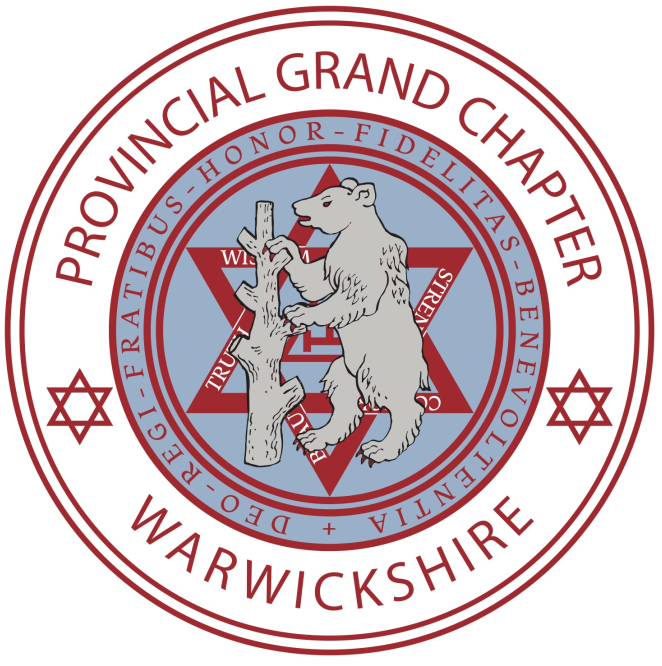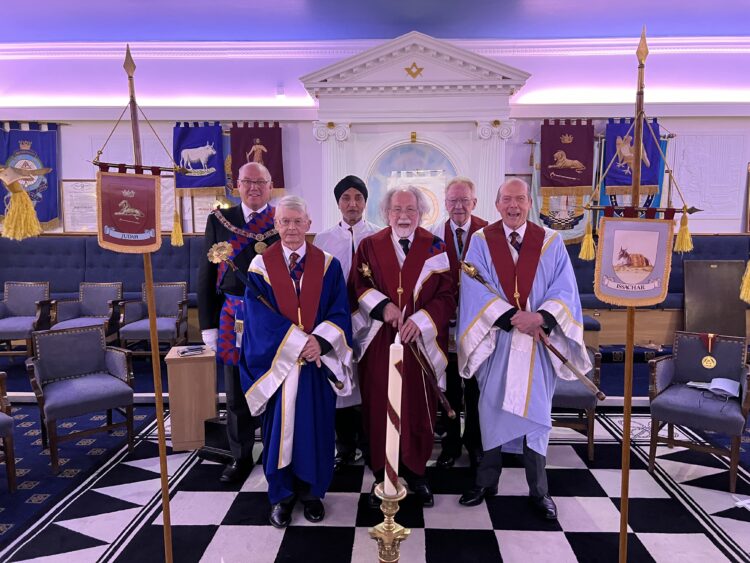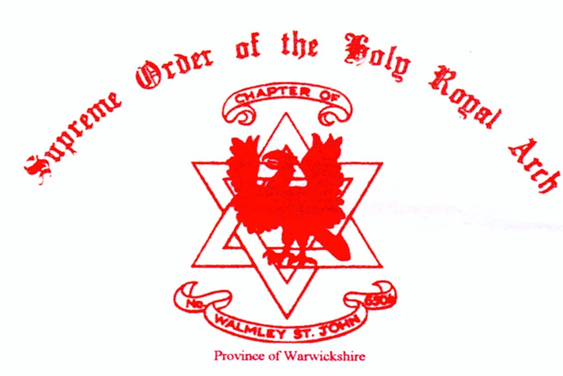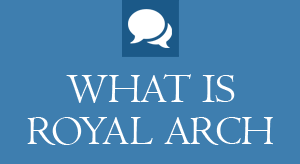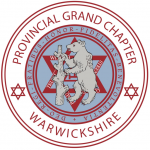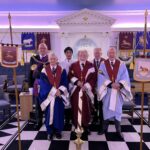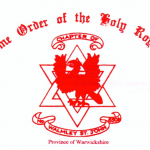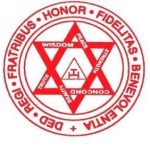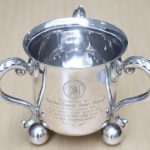Dear Warwickshire Companions,
E Comp. Philip Gough, PGSwdB,
Deputy Grand Superintendent
Provincial Grand Chapter of Warwickshire
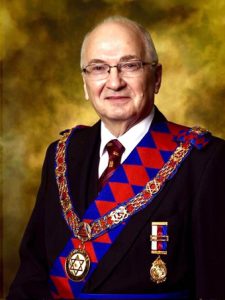
1 Corinthians 15:52
David Graham, who I congratulate on his forthcoming appointment, suggested that I write a follow-up to an article I submitted to the web site during lock down. I hope that he doesn’t regret so doing.
I shall do it in two parts, concentrating on the Royal Arch (RA) in the second but I must first thank E Comp Philip Hall for appointing me as his Deputy. His leadership has been inspiring and, among other things, I hope that my article will encourage all Warwickshire members to support him in taking the province forwards.
I recently met a wonderful mason at a Chapter in Coventry – E Comp Hugh Furber. He told me that, at the time of his initiation, there were about 14,000 members in Warwickshire. This reminded me of a graph that I drew when Assistant ProvGSec. W Bro Nigel Bister had been kind enough to get me appointed to that post along with a principle remit to oversee the introduction of the Adelphi System. (Since replaced by Adelphi 2).
My role gave me full access and I was able to look at Warwickshire member-numbers from 1986 onwards as well as to get similar data from other provinces. I have long since lost the piece of paper, but the graph showed a steady decline in numbers and, if extended, predicted a zero total sometime between 2030 and 2040. Thankfully, things often don’t bottom out, but it was a clear warning.
What the Somerset figures showed (it had a broadly similar membership – but smaller than ours at the time) is that they had a much lower number of Lodges and Chapters. They still do, but their membership is now larger than ours! North Wales did some research about ten years ago which showed (not unexpectedly?) that larger masonic units were more successful at recruiting and retaining members than smaller ones. With an average membership almost twice ours, it is hardly surprising that they seem to be performing better than us?
This brings me to the visitor’s toast syndrome. I have heard so many of these, both the toast and the response. The common theme is predominantly about the wonderful experience of meeting others, gaining new friends and, maybe, seeing some variations in the ritual and procedures. Masonry was very good at creating many more lodges and chapters to cope with rising numbers but when any mention of being equally dynamic and to now reduce the number of units causes something approaching open hostility. I have heard all of the retorts – “…they don’t do it our way”, “…they meet on the wrong Friday”, “…I don’t like such and such”. There is often little or no evidence to support these remarks.
Isn’t the important thing to remember is that we all joined masonry (or the RA) and that the organisation is more important than individual units especially if we wish to avoid the aforementioned zero? My personal experience of “failing” units is that they have two real choices. First struggle on and hope for the miracle. It rarely happens! The day will come when they hand in their warrant and the members disperse – sadly, some never join anything else. The other way is some form of amalgamation – only the Book of Constitutions method costs money! There has been a lot of mistrust sown concerning any form of amalgamation with some in Warwickshire saying that they don’t work. They can, and in most provinces do! This is not to say that all will work – two units with 7 members each would produce, per the Somerset model, a unit that is still weak – we need 25, or is 30+ in each unit (?).
Should we not have a meeting-place by meeting-place series of gatherings to discuss the numbers of members versus the number of units? It will prove the point. How many lodges and chapters struggle sometimes to fill offices especially as, maybe for good reason, a number of members are often missing?
A last point before getting on to the RA. My proposer in to Masonry told me that, once the lodge door was closed, all the troubles of the world, including those from an individual’s working life, were locked outside. What a relief that was – an escape from performance measures and objectives, no SWOT(!) analyses, no 3- or 5-year plans, none of Deming’s Statistical Process Controls, no continuous improvement, no graduate-entry schemes and no mission statements. Sadly, in recent times some of these got hold of the key to that very door and have intruded on meeting nights.
We now have a mission statement – how many know it? How many have appreciated these initiatives and how many members have we lost? We don’t know because we (thankfully?) haven’t asked but, regardless, the decline in members doesn’t seem to have been affected by any of them! We now have the digital marketing campaign and, whilst it appears to be having some success, how long will it be before it makes a positive impact on the membership numbers, especially with the losses we sustained during covid when we couldn’t introduce new members?
Now for the RA! Subject to a reduction in the number of Chapters, any new recruits, from the marketing campaign or not, will see a colourful and dramatic ceremony that completes the journey described in their Book of Constitutions, there are also lessons to be learned here though. The restriction on members joining the RA to those who were Worshipful Brethren, was removed in 1843 but when I approached a “young” brother at a recent Craft provincial meeting and asked if he was in the RA, his three (more senior) minders simultaneously responded, “He’s not joining the RA until he’s through the chair”. His lips didn’t move! No new member has to be immediately propelled into office.
I have often been slightly irritated by the oft used expression, “The RA is complicated”. Anyone reading the Sojourners Card (Janitor’s Card) will learn otherwise. (I believe the original version was written by E Comp Peter Mason, PGSN, a prolific, and authoritative, writer on the RA). It is easy to follow, but the ceremony is spoiled in some chapters who remove the drama – the candidate must be allowed to see what took place whilst he was hoodwinked and not just hear the words spoken by the sojourner. Feet standing on a crowbar or bricks suspended from string must go, and the arch of dome must be reconstructed, and again opened, during the appropriate part of the ceremony.
I have saved the greatest gripe to (almost) the end. All those of a nervous disposition should not read on.
It is a matter for lodges and chapters to determine their methods and ritual. Otherwise, how else could we see variations in the opening of a lodge where, sometimes, individual officers may say nothing, may specify only their duties or, often, state their place as well as their duties? Or how could it be that most lodges don’t give the lecture on the first-degree tracing board on the night of initiation, or the second one on the night of passing? This is their right as stated in the book of constitutions and Grand Lodges/Chapters traditionally keep out of matters of ritual unless the landmarks are affected.
This takes me back to the “complicated versus too long” argument. The ceremony is long enough without throwing in, as I have too many times seen, two or three of the lectures. I agree with Peter Mason that the paragraph in the book, Information for the Guidance of Members of the Craft, that uses the word “should”, in relation to the mystical lecture, is somewhat less dictatorial than the word “must”. More often than not, and sorry to those so named, but the lectures, most typically the full mystical, are more often done because it is “old” Tom, Dick or Harry’s party piece, and to avoid upsetting him, than to educate the candidate.
The lectures are a product of the committee, headed by the Duke of Sussex, intended to produce a standard RA ritual to be promulgated in 1835. It is unlikely that they would be familiar to many RA masons before that time. The promulgation was a failure – probably because of difficulties in travelling to London at that time, poor communication, and the fear of publishing, or even making notes.
We were left with a miscellany which has produced many variations. Even in the midlands, where there was a (pre second world war) common working, each of the provinces that used it now have their own workings – some with major differences to ours – although none have dared to suggest that the lectures could be deferred to one of (many) evenings on which there is to be no ceremony – and yet that is precisely what should be done.
I have circulated, and talked about, my 19th Century book of ritual, and of the Cumberland and Westmorland variations that could so easily be adopted, including the avoidance of the King James Version of the Scripture readings and Prayers for those in more understandable (and usually more concise) modern English. The combination of a long ceremony and, to some, unfamiliar language used in the readings has, I know, led to many using another oft heard expression – “the RA is not for me”. Is this why, amongst the subscribing craft members in Warwickshire, we have a substantial number who are unattached RA masons?
Before “Disgusted of Tunbridge Wells” gets a chance to pick up his pen, let me add that, perhaps, the Third Grand Principal agrees too. I had lunch with him recently and he said so, although I should perhaps add that it wasn’t a private lunch – it was at the Oxfordshire Annual Convocation with about 100 others!
I will endeavour to be accurate with the quote. After dealing with the length of things, Tom, Dick and Harry, and the multitude of spare evenings on which the lectures could be given he said, “If you must, if you really must, do the Mystical Lecture, do only the short version”. His words surely suggest that not only can that (the shortened version) be done but that (subject to what follows) the lectures need not be done on the same night as the Exaltation.
My old ritual book deals with the issue admirably – the candidate is taken to the East to be invested and, immediately thereafter, is shown how to share the Word and, finally, the signs are demonstrated. The candidate and sojourner(s) then sit and the book has the words “End of Ceremony of Exaltation” clearly printed. (I do concede that they are still there, but “detached”). Why not treat them in the same way as the first (and second) tracing board lectures and let Tom, Dick or Harry deliver them on an evening set aside for that purpose – maybe annually?
I have enjoyed my time in Masonry, I was initiated in 1984, Stanley Lates once said (Tunbridge Wells residents read no further) “It is sufficient for someone to be in the three main orders, Craft, Royal Arch and the Mark. It is significant that he didn’t place an order on the latter two! I agree and let’s stop arguing about which should come first.
Something I learned during my childhood and teenage years – “Light the blue touch paper and retire”

